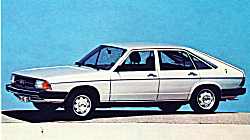

The car was designed by US-born designer Tom Tjaarda[3] and replaced the De Tomaso Mangusta. Unlike the Mangusta, which employed a steel backbone chassis, the Pantera was a steel monocoque design, the first instance of De Tomaso using this construction technique. It made its public debut in Modena in March 1970 and was presented at the 1970 New York Motor Show a few weeks later.[3] Approximately a year after that production Panteras started finding their way into the hands of customers and production had already been ramped up to a remarkable (by the standards of Modena-built exotica) 3 per day.[3]
The curious slat-backed seats which had attracted comment at the New York Show were replaced by more conventional body-hugging sports-car seats in the production cars: leg-room was generous but the pedals were off-set and headroom was insufficient for drivers above approximately 6 ft. (ca. 183 cm) tall.[3] Reflecting its makers' transatlantic ambitions, the Pantera came with an abundance of standard features which appeared exotic in Europe, such as electric windows, air conditioning and even "doors that buzz when ... open".[3] By the time the Pantera reached production, the interior was in most respects well sorted, although resting an arm on the central console could lead to inadvertently activating the poorly located cigarette lighter.[3]
The first 1971 Panteras were powered by a Ford 351 cu in (5.8 L) V8 engine that produced 330 hp (246 kW; 335 PS). The high torque provided by the Ford engine reduced the need for excessive gear changing at low speeds: this made the car much less demanding to drive in urban conditions than many of the locally built competitor products.[3]
The ZF transaxle used in the Mangusta was also used for the Pantera: a passenger in an early Pantera recorded that the mechanical noises emanating from the transaxle were more intrusive than the well restrained engine noise.[3] Another Italian exotic that shares the ZF transaxle is the Maserati Bora, also launched in 1971 though not yet available for sale.[4] Power-assisted four-wheel disc brakes and rack and pinion steering were all standard equipment on the Pantera. The 1971 Pantera could accelerate to 60 mph (97 km/h) in 5.5 seconds according to Car and Driver.
In the summer of 1971 a visitor to the De Tomaso plant at Modena identified two different types of Pantera awaiting shipment, being respectively the European and American versions.[3] From outside, the principal differences were the larger tail lamps on the cars destined for America along with "fender side-lamps".[3] Not being a cost-accountant but a journalist, the visitor was impressed by the large number of cars awaiting shipment: in reality spending the best part of a year under dust covers in a series of large hangars probably did nothing for the cash-flow of the business or the condition of some of the cars by the time they crossed the Atlantic.
De Tomaso Pantera at Goodwood Festival of Speed 2010
--------------------------------------------------------------------------------
Late in 1971, Ford began importing Panteras for the American market to be sold through its Lincoln Mercury dealers. The first 75 cars were simply European imports and are known for their "push-button" door handles and hand-built Carrozzeria Vignale bodies. A total of 1,007 Panteras reached the United States that first year. Unfortunately, these cars were poorly built, and several Panteras broke down during testing on Ford's own test track. Early crash testing at UCLA showed that safety cage engineering was not very well understood in the 1970s. Rust-proofing was minimal on these early cars, and the quality of fit and finish was poor, with large amounts of lead being used to cover body panel flaws. Notably, Elvis Presley once fired a gun at his Pantera after it wouldn't start.
1972 De Tomaso Pantera InteriorSeveral modifications were made for the 1972 model year Panteras. A new 4 Bolt Main Cleveland Engine, also 351 in3, was used with lower compression (from 11:1 to 8.6:1, chiefly to meet US emissions standards and run on lower octane standard fuel) but with more aggressive camshaft timing (in an effort to reclaim some of the power lost through the reduction in compression). Many other engine changes were made, including the use of a factory exhaust header.
The "Lusso" (luxury) Pantera L was also introduced in 1972. It featured large black bumpers for the US market as well as a 248 hp (185 kW) Cleveland engine. The 1974 Pantera GTS featured yet more luxury items and badging.
Ford ended their importation to the U.S. in 1975, having sold roughly 5,500 cars in the United States. De Tomaso continued to build the car, however, in ever-escalating forms of performance and luxury for more than a decade. A small number of Panteras were imported to the US by gray market importers in the 1980s, notably Panteramerica and AmeriSport. In all, about 7,200 Panteras were built.
Mangusta,Pantera





